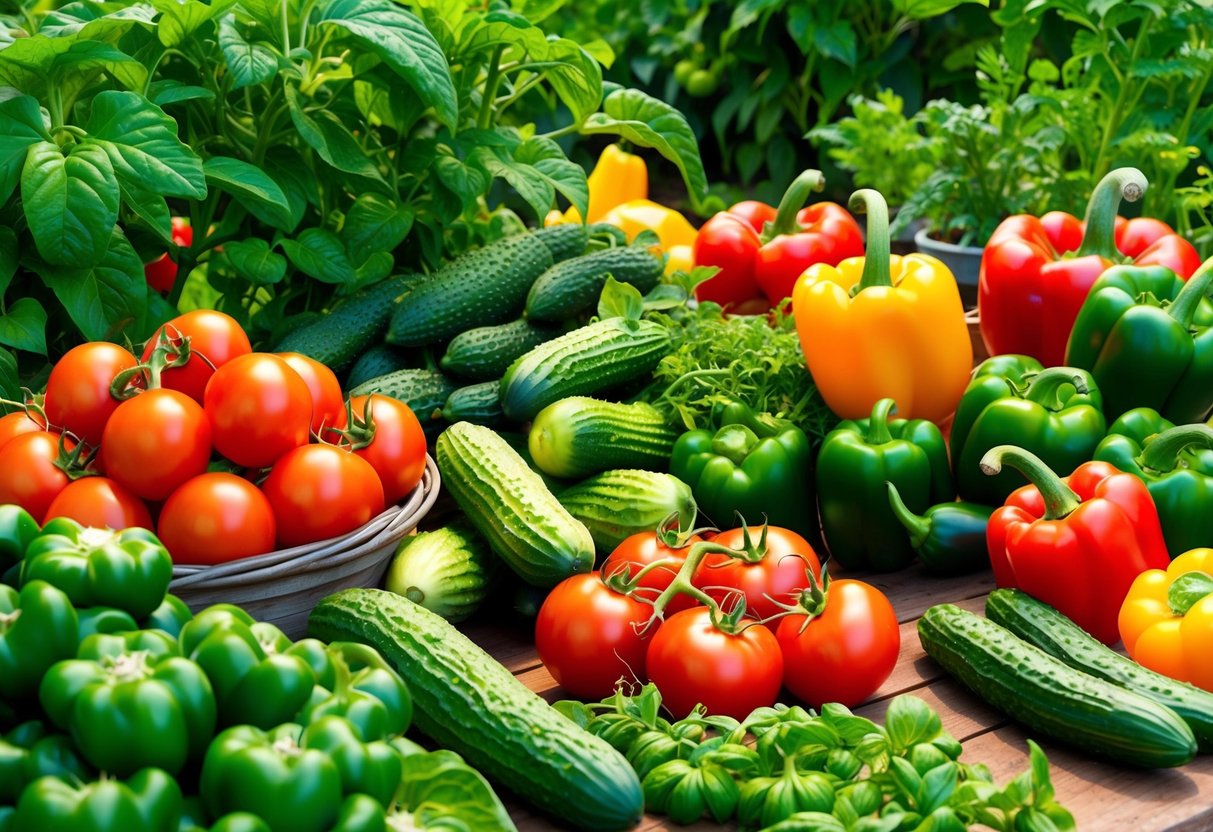
Supporting Growth: Trellising and Space Management
Maximizing vegetable yield in a home garden requires careful attention to how climbing plants are supported and how every inch of garden space is utilized. Simple techniques make harvests easier and help keep plants healthy.
Effective Trellising for Climbing Vegetables
Trellising is essential for crops like cucumbers, pole beans, peas, and some varieties of squash. Vertical supports such as wire cages, bamboo teepees, and sturdy fencing not only keep vines off the ground but also improve air circulation.
This reduces disease risk and makes harvesting simpler. Proper trellis height and spacing are crucial.
For example, pole beans thrive on trellises at least 6 feet tall, while cucumbers do well with 4-foot structures. Secure vines using soft ties or garden clips to avoid damaging stems.
Regularly guide new shoots onto the support for even growth. Using trellises allows gardeners to grow more in less ground area.
Adding vertical elements can also create partial shade for tender greens growing below, helping to extend harvest times. Climbing vegetables often yield better when grown vertically, making trellising strategies highly recommended for high yields.
Efficient Space Management for High Yields
Garden space is often limited, making strategic layouts essential for maximum productivity. Raised beds, square foot gardening grids, and companion planting are common methods for increasing yield without overcrowding plants.
Planting in blocks rather than rows can improve density and minimize wasted space between plants. Prioritize fast-growing crops like lettuce, radishes, and spinach, which can be harvested early and replaced with slower-growing varieties.
A table can help with planning:
| Vegetable | Spacing Needed | Harvest Turnover |
|---|---|---|
| Leaf Lettuce | 6-8 inches apart | 30-45 days |
| Bush Beans | 4 inches apart | 50-60 days |
| Radishes | 1 inch apart | 20-30 days |
| Carrots | 2-3 inches apart | 60-75 days |
Choosing compact or high-yield varieties, like bush tomatoes or dwarf peppers, can also improve space management. Interplanting shallow-rooted greens among slower crops such as tomatoes and peppers is another tactic endorsed by experts for beginner gardens.
Consistent thinning and proper spacing ensure stronger plants and easy access for maintenance and harvest.
Frequently Asked Questions
Home gardeners often seek vegetables that offer a balance of easy care, reliable production, and suitability for limited space. Choosing fast-growing, resilient varieties makes it practical for beginners to enjoy fresh harvests with minimal experience.
What are the top vegetables recommended for beginners to grow in small gardens?
Leafy greens like lettuce and spinach are well-suited for small spaces due to their compact growth and rapid maturity. Radishes and green onions also thrive in tight areas and can be harvested in as little as three to four weeks after planting.
Bush beans and cherry tomatoes offer prolific yields and are commonly grown in home gardens. These options consistently appear on lists of easy vegetables for beginners due to their low maintenance needs.
Which vegetables can be easily grown in pots and containers?
Herbs such as basil, parsley, and chives adapt quickly to container gardening and require only basic sunlight and water. Salad greens, including arugula and baby kale, are also excellent choices for pots since they do not need deep soil.
Dwarf varieties of tomatoes, peppers, and bush beans can thrive in containers if provided with sufficient sunlight and regular watering. These vegetables are often chosen for patios, balconies, and urban settings where garden space is limited.
What are some high-yield vegetables that are simple for first-time gardeners?
Zucchini and bush beans are well-known for their high yields and straightforward growing requirements. Both can produce a steady supply of vegetables throughout the season, even from just a few plants.
Cherry tomatoes are also productive and less prone to diseases than larger tomato varieties. These vegetables are frequently featured in high-yield options for beginners and can provide an abundance of harvests with minimal effort.
Which easy-care vegetables can be grown all year round?
Cool-season vegetables like kale, spinach, and Swiss chard can tolerate mild frost and can be harvested for much of the year in temperate climates. In milder regions, some gardeners maintain year-round harvests with these hardy leafy greens.
Lettuce and radishes may also be grown during multiple seasons with proper protection or succession planting. These crops are staples for continuous production in home gardens.
What are the most suitable vegetables for growing in raised beds with little gardening experience?
Carrots, lettuce, and radishes are particularly successful in raised beds, thanks to improved soil drainage and easier weed management. Raised beds make it simple for beginners to control growing conditions, boosting success rates for root and leafy vegetables.
Beans, beets, and spinach also thrive in raised beds and require minimal daily care. These choices allow novice gardeners to experiment with a range of crops in a defined space.
Are there any vegetables that can produce quickly for early harvesting by novice gardeners?
Radishes are among the fastest vegetables to mature, with some varieties ready for harvest in as little as 20–30 days.
Salad greens like arugula and baby lettuce can also be picked in about a month from sowing.
Turnips and green onions offer early yields and require little maintenance.